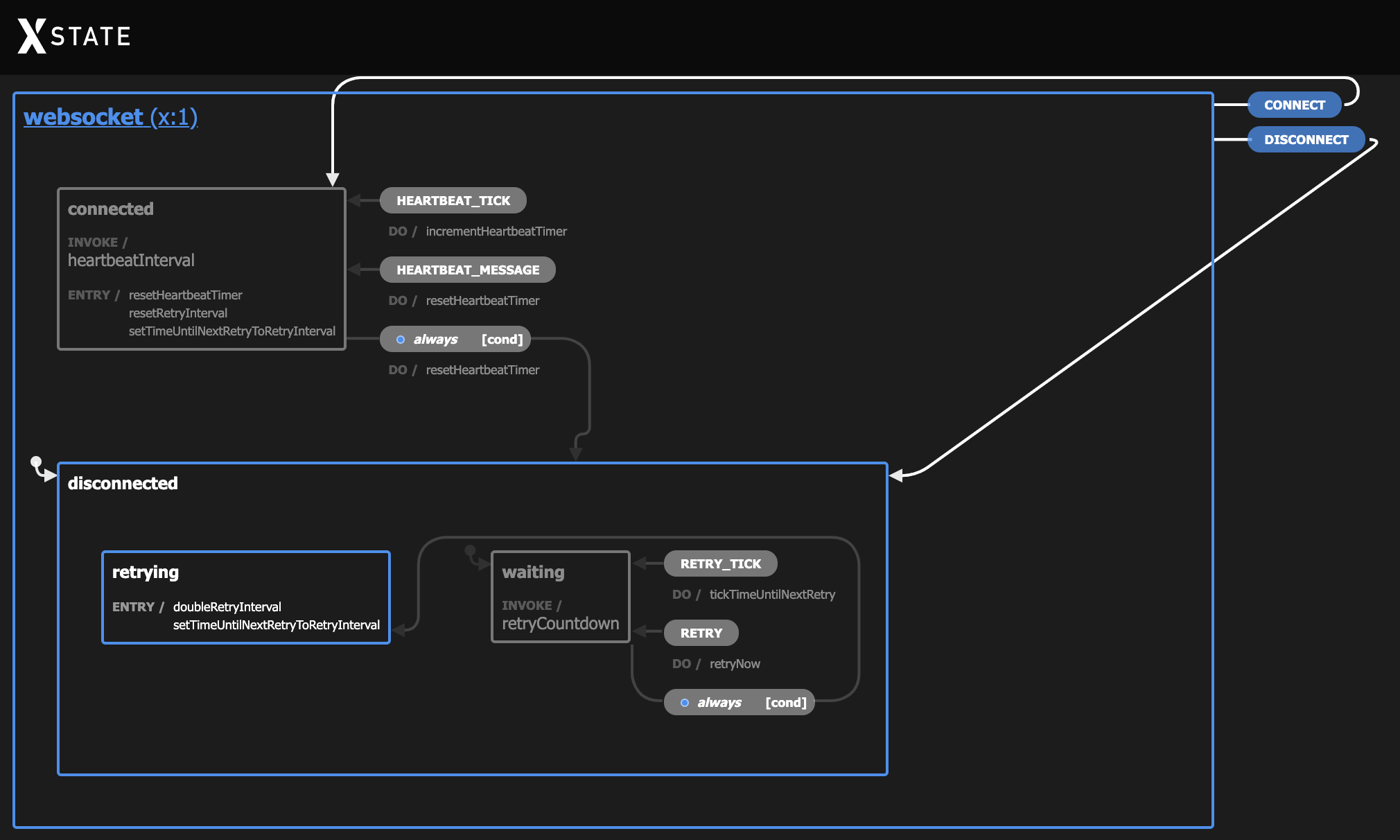Websockets are awesome, aren’t they? Bidirectional messaging with low overhead (2 - 14 bytes per message for the frame header) – what’s not to love?
Auto-Reconnect
Well, for any long-lived application, one thing you’ll want to have is auto-reconnect behavior. This Stack Overflow answer uses a setTimeout to attempt to reconnect every second. However, as one of the follow-up comments mentions, exponential backoff would probably be a better strategy.
Why XState
Ordinarily, I’d npm install socket.io and call it a day, but this time, I was prototyping a web app that talks to an ESP32 microcontroller as a websocket server, so that’s a no-go on any non-C++ server-side code. Additionally, I was still waffling between using React, Svelte, or no framework at all for the frontend, so I ended up encapsulating the logic into a hierarchical state machine in XState, rather than getting locked into a particular useReducer / writable store / vanilla implementation.
Here’s that sweet, sweet Websocket Machine statechart visualized:

CodeSandbox
Websocket Machine Overview
The Websocket Machine has two root-level states: 1. connected; and 2. disconnected.
Within the disconnected state, there are two nested states: 1. retrying; and 2. waiting.
When the machine is connected, a heartbeat timer ticks, and the machine will transition to the disconnected state if no message arrives within 10 seconds. Each incoming message resets the heartbeat timer.
When the machine is disconnected, the machine will wait for the duration of the retryInterval, and then try to connect to the websocket server. Upon entering the retrying state, the machine will double the retryInterval and add anywhere from 0 - 1000 milliseconds to avoid situations where all of the clients sync up somehow, increasing the retryInterval for the next connection attempt to a maximum of ~64 seconds.
It’s held up well in my testing so far, and thankfully has kept my bundle size small enough for a tiny embedded device to serve while also handling other business logic.